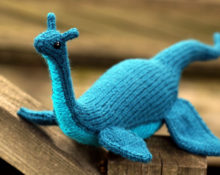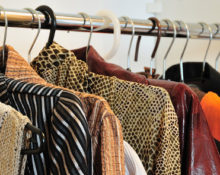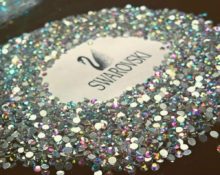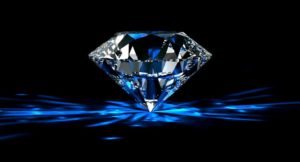 As sad as it is to realize, everything on Earth has a beginning and an end. Human life is short and fleeting. When we lose our loved ones, we keep memories of them in our souls, objects dear to our hearts - photos, videos and favorite things. In the last decade, a unique opportunity has emerged to preserve not only memories, but also a close connection with your loved one, thanks to diamonds from the ashes of the deceased. In this case, it will “transform” into a pure and noble stone.
As sad as it is to realize, everything on Earth has a beginning and an end. Human life is short and fleeting. When we lose our loved ones, we keep memories of them in our souls, objects dear to our hearts - photos, videos and favorite things. In the last decade, a unique opportunity has emerged to preserve not only memories, but also a close connection with your loved one, thanks to diamonds from the ashes of the deceased. In this case, it will “transform” into a pure and noble stone.
Are diamonds made from the ashes of the dead?
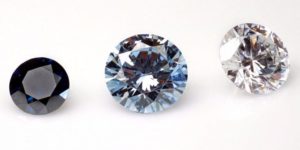 In all cultures, at all times, the attitude towards the dead has been special - respectful, and sometimes mystical. During the existence of mankind, every nationality and every religion has developed its own rituals and methods of burial. The most common of them are burial in the ground and burning.
In all cultures, at all times, the attitude towards the dead has been special - respectful, and sometimes mystical. During the existence of mankind, every nationality and every religion has developed its own rituals and methods of burial. The most common of them are burial in the ground and burning.
Rapid population growth, lack of free land, unaesthetic appearance of cemeteries, burying masses of soil-poisoning substances (plastic, rubber, varnish, paint, embalming substances) along with the deceased - all this is pushing the “ritual industry” to look for new and alternative methods of burial.
“Biodegradable capsules”, “Green cemeteries”, “Towers of Moksha” may soon begin to replace traditional burials and columbariums.
A number of innovative ways to perpetuate the memory of the deceased have emerged - “resomation” (chemical dissolution of bodies) and “fertilization” (processing of remains into useful substances). The ashes of the deceased are added to graphite pencils, vinyl records, fireworks and fireworks. But the most interesting, environmentally friendly and aesthetically pleasing are the “memorial diamonds” grown from the ashes of the deceased.
This unusual idea came to the mind of a young scientist from Switzerland, Rinaldo Willi, quite by accident. While translating an article about the creation of synthetic diamonds, he misunderstood the meaning of the word “ash,” thinking that it was human rather than plant material.
His teacher pointed out the mistake to the young man. But they both liked the idea. Having contacted the author of the article, who was a Russian scientist, they all began to develop this area together. So, in 2004, the company “Algordanza” appeared - which means “Memory” translated from the Romansh language.
Interesting fact! For 15 years now, the company has been turning the bodies of the deceased into precious relics, completing more than 800 orders a year, and this figure is growing steadily.
The company has certain rules or principles that are followed unquestioningly:
- do not touch the body and the diamond with bare hands - only with gloves, because this is not a simple biomaterial, but a body with its own soul;
- it is forbidden to start a conversation with a client with condolences until you get to know the person better, so that it does not sound insincere;
- each client is given the opportunity to say goodbye to a loved one in private;
- company employees personally deliver the “memory diamond” to relatives and present it in a solemn atmosphere, in the presence of all family members;
- the stone must be packed in a beautiful polished wooden box;
- the company fundamentally does not work, unlike others, with the remains of pets;
- additional “foreign” carbon is never used if it is not enough to create the stone;
- The stones have their natural color; laboratory workers do not, in principle, resort to coloring them.
Today, about 10 companies around the world are engaged in growing artificial diamonds from the ashes of the deceased. Another leader in this “industry” is the world-famous “LifeGem”; the services of the Russian company “Ememo” are popular and in demand.
Who needs diamonds from ashes and why?
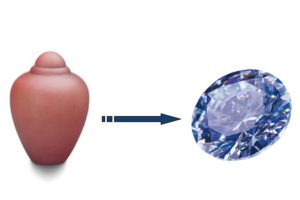 Agree that cemeteries are not only a depressing, but also far from aesthetically pleasing sight. In addition, after the funeral, you have to visit the grave from time to time, restore order there, remove garbage and grass, straighten the fence and care for the grave. Nobody likes to visit this place, which evokes associations with grief and sadness.
Agree that cemeteries are not only a depressing, but also far from aesthetically pleasing sight. In addition, after the funeral, you have to visit the grave from time to time, restore order there, remove garbage and grass, straighten the fence and care for the grave. Nobody likes to visit this place, which evokes associations with grief and sadness.
Keeping ashes in an urn is a more acceptable way. Although visiting a columbarium also causes negative emotions. Not everyone will decide to store an urn with ashes on a shelf at home. In addition, it may fall and the ashes may scatter.Sweeping a loved one off the floor is not a pleasant pleasure.
Memorial diamonds will solve all of the above problems. They are beautiful and clean, environmentally friendly, and do not cause unpleasant associations. Stones retain a connection with a loved one; you can touch them and, if desired, always carry them with you, making them into jewelry.
Many companies working in this field are engaged in growing diamonds from the ashes of pets. The lifespan of pets is much shorter than the lifespan of their owners.
Pets become “members of the family”, sharing grief and joy with their owners. Therefore, many do not want to part with their pets even after their death. Creating memory diamonds from the ashes of pets is a very popular service that allows you to perpetuate the memory of “our little brothers.”
A memorial diamond will not only preserve the memory of the deceased, it is a family heirloom that can be passed down from generation to generation, and is also a good financial investment, although it sounds a little cynical.
Interesting fact! The cost of a memory diamond depends on the size, quality and cut and ranges from $5,000 to $22,000. The Ememo company will grow a 1-carat stone for about 100,000 rubles.
How are diamonds made from dust and their features?
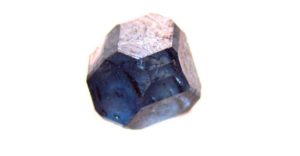 Natural diamonds are “born” in the depths of the Earth’s mantle, at a depth of hundreds of kilometers, at a temperature of approximately 1300°C and under a pressure of about 50,000 atm.
Natural diamonds are “born” in the depths of the Earth’s mantle, at a depth of hundreds of kilometers, at a temperature of approximately 1300°C and under a pressure of about 50,000 atm.
When growing artificial diamonds, manufacturers try to recreate their growth conditions in nature as accurately as possible.
In a few words, without going into details, the technology for creating memorable diamonds is as follows:
- the ashes after cremation are delivered to a special laboratory;
- here it is treated with certain chemicals to separate and extract all the carbon;
- under the influence of high temperatures, carbon is converted into graphite;
- graphite is placed in a special growth cell, where conditions are created that are as close as possible to natural ones.
After a few weeks or months, a diamond is extracted from it.
Interesting fact! The average weight of human ashes is 2.5 kg – 3.0 kg. The size of the diamond from it is approximately 4 carats. After cutting - approximately 1 carat. Sometimes the diamonds are larger - 1.6 or 1.8 carats.
Each diamond has unique properties that are unique to it. The size of the stone directly depends on the time spent in the device.
The quality of the diamond and its color depend on the quality characteristics of the ash. Medicines, chemotherapy, dentures or others - all affect the characteristics of the stone.
Dentures affect the quality and purity of the stone. Chemotherapy affects color, the diamond becomes less saturated and lighter. Boron makes them blue, nitrogen makes them yellower, irradiation makes them pink or green.
Interesting fact! The vast majority of diamonds made from human ashes are bluish in color. But there are pinkish, yellowish and almost black ones.
Just as no two people are alike, every diamond is unique. After the stone is in the hands of jewelers, it turns into a beautiful noble diamond.
“Everything is from dust, and everything will return to dust” - this is what King Solomon once said. Now one can argue with this, arguing that everything will return in a beautiful gemstone - the “king of crystals.”
And who knows, maybe soon, instead of huge and unaesthetic cemeteries and columbariums, we will be surrounded by ancestral “jewelry tombs” or “memorial museums”, where multi-colored diamond relics will shine and shimmer as exhibits!


 0
0